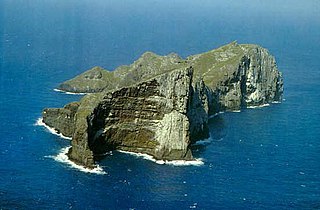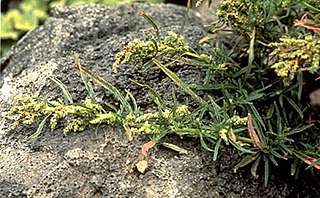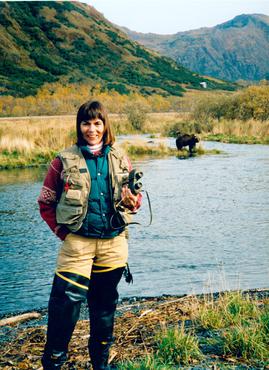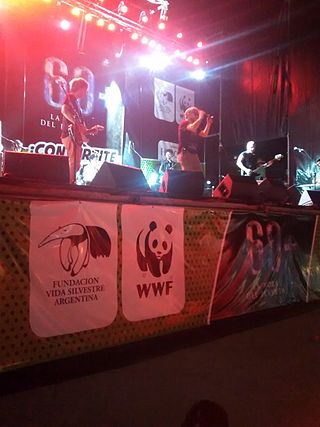
The United States Fish and Wildlife Service is an agency within the United States Department of the Interior dedicated to the management of fish, wildlife, and natural habitats. The mission of the agency is "working with others to conserve, protect, and enhance fish, wildlife, plants and their habitats for the continuing benefit of the American people."

Bruce Edward Babbitt is an American attorney and politician who served as the 47th United States Secretary of the Interior from 1993 to 2001 under President Bill Clinton. He previously served as the 16th governor of Arizona from 1978 to 1987 and was a candidate for President of the United States in the 1988 Democratic primaries.

Dirk Arthur Kempthorne is an American politician who served as the 49th United States Secretary of the Interior from 2006 to 2009 under President George W. Bush. A member of the Republican Party, he previously served as a United States Senator from Idaho from 1993 to 1999 and the 30th governor of Idaho from 1999 to 2006.

The Endangered Species Act of 1973 is the primary law in the United States for protecting and conserving imperiled species. Designed to protect critically imperiled species from extinction as a "consequence of economic growth and development untempered by adequate concern and conservation", the ESA was signed into law by President Richard Nixon on December 28, 1973. The Supreme Court of the United States described it as "the most comprehensive legislation for the preservation of endangered species enacted by any nation". The purposes of the ESA are two-fold: to prevent extinction and to recover species to the point where the law's protections are not needed. It therefore "protect[s] species and the ecosystems upon which they depend" through different mechanisms. For example, section 4 requires the agencies overseeing the Act to designate imperiled species as threatened or endangered. Section 9 prohibits unlawful ‘take,’ of such species, which means to "harass, harm, hunt..." Section 7 directs federal agencies to use their authorities to help conserve listed species. The Act also serves as the enacting legislation to carry out the provisions outlined in The Convention on International Trade in Endangered Species of Wild Fauna and Flora (CITES). The Supreme Court found that "the plain intent of Congress in enacting" the ESA "was to halt and reverse the trend toward species extinction, whatever the cost." The Act is administered by two federal agencies, the United States Fish and Wildlife Service (FWS) and the National Marine Fisheries Service (NMFS). FWS and NMFS have been delegated by the Act with the authority to promulgate any rules and guidelines within the Code of Federal Regulations (CFR) to implement its provisions.

Necker Island is a small island in the Northwestern Hawaiian Islands. It is located at 23°34′30″N164°42′01″W in the Pacific Ocean, 430 miles northwest of Honolulu, Hawaii, 155 miles northwest of Nihoa, and 8 miles north of the Tropic of Cancer. It is part of the State of Hawaii in the United States. It contains important prehistoric archaeological sites of the Hawaiian culture and is part of the Hawaiian Islands National Wildlife Refuge within the Papahānaumokuākea Marine National Monument.

Nihoa, also known as Bird Island or Moku Manu, is the tallest of ten islands and atolls in the uninhabited Northwestern Hawaiian Islands (NWHI). The island is located at the southern end of the NWHI chain, 296 km (160 nmi) southeast of Necker Island. Nihoa is the closest NWHI in proximity to the eight main windward Hawaiian Islands at approximately 240 km (130 nmi) northwest of the island of Kauaʻi. The island has two peaks, 272 m (892 ft) Miller's Peak in the west, and 259 m (850 ft) Tanager Peak in the east. Nihoa's area is about 171 acres (0.69 km2) and is surrounded by a 142,000-acre (57,000 ha) coral reef. Its jagged outline gives the island its name, Nīhoa, which is Hawaiian for "toothed, serrated".

The Pearl and Hermes Atoll, also known as Pearl and Hermes Reef, is part of the Northwestern Hawaiian Islands, a group of small islands and atolls that form the farthest northwest portion of the Hawaiian island chain. The atoll consists of a variable number of flat and sandy islets, typically between five and seven. More were noted in historical sources but have since been lost to erosion and rising sea levels.

The National Wildlife Federation (NWF) is the United States' largest private, nonprofit conservation education and advocacy organization, with over six million members and supporters, and 51 state and territorial affiliated organizations (including Puerto Rico and the Virgin Islands).

The National Marine Fisheries Service (NMFS), informally known as NOAA Fisheries, is a United States federal agency within the U.S. Department of Commerce's National Oceanic and Atmospheric Administration (NOAA) that is responsible for the stewardship of U.S. national marine resources. It conserves and manages fisheries to promote sustainability and prevent lost economic potential associated with overfishing, declining species, and degraded habitats.

The Papahānaumokuākea Marine National Monument (PMNM) is a World Heritage listed U.S. National Monument encompassing 583,000 square miles (1,510,000 km2) of ocean waters, including ten islands and atolls of the Northwestern Hawaiian Islands. It was created in June 2006 with 140,000 square miles (360,000 km2) and expanded in August 2016 by moving its border to the limit of the exclusive economic zone, making it one of the world's largest protected areas. It is internationally known for its cultural and natural values as follows:
The area has deep cosmological and traditional significance for living Native Hawaiian culture, as an ancestral environment, as an embodiment of the Hawaiian concept of kinship between people and the natural world, and as the place where it is believed that life originates and to where the spirits return after death. On two of the islands, Nihoa and Mokumanamana, there are archaeological remains relating to pre-European settlement and use. Much of the monument is made up of pelagic and deepwater habitats, with notable features such as seamounts and submerged banks, extensive coral reefs and lagoons.

Amaranthus brownii was an annual herb in the family Amaranthaceae. The plant was found only on the small island of Nihoa in the Northwestern Hawaiian Islands, growing on rocky outcrops at altitudes of 120–215 m (394–705 ft). It was one of nine species of Amaranthus in the Hawaiian Islands, as well as the only endemic Hawaiian species of the genus. It is now considered extinct.
The Alaska Wildlife Alliance(AWA) is a non-profit organization that was founded in 1978 in Anchorage, Alaska. It has dedicated its efforts and funds to protect Alaskan wildlife for its intrinsic value and to benefit the present and future generations. With the initial goal to identify, research and monitor issues affecting marine mammals and endangered species, increase public understanding of environmental issues, and develop programs to aid in the protection of marine mammals and other endangered species, AWA has expanded its focus to monitoring and influencing state wildlife management policies. AWA has also earned notoriety through its efforts to curtail aerial wolf hunting, restrict predator control programs, and protect and restore Alaska's endangered species. They also support ethical hunting and fair chase concepts, believing that the practices of unethical hunting and not allowing fair chase both jeopardizes future hunting opportunities and degrades Alaska's wildlife population.

A conservation officer is a law enforcement officer who protects wildlife and the environment. A conservation officer may also be referred to as an environmental technician/technologist, game warden, park ranger, forest watcher, forest guard, forester, gamekeeper, investigator, wildernessofficer, wildlifeofficer, or wildlife trooper.

David J. Hayes is an American attorney and legal scholar who serves in the Biden Administration as Special Assistant to the President for Climate Policy. Hayes has led White House work on clean energy deployment issues, climate resilience and greenhouse gas emission reduction and carbon sequestration initiatives. Hayes also has assisted in developing and implementing the climate-related provisions included in the Infrastructure Investment and Jobs Act and the Inflation Reduction Act.

Mollie H. Beattie was an American conservationist and government official who served as director of the United States Fish and Wildlife Service. In 2009, she was designated a Women's History Month Honoree by the National Women's History Project.

Susan Elizabeth "Liz" Birnbaum served as Director of the Minerals Management Service in the United States from July 15, 2009, to May 27, 2010. Birnbaum was in charge of administering "programs that ensure the effective management of renewable energy [...] and traditional energy and mineral resources on the nation's Outer Continental Shelf, including the environmentally safe exploration, development, and production of oil and natural gas, as well as the collection and distribution of revenues for minerals developed on federal and American Indian lands."

The United States Fish and Wildlife Service Office of Law Enforcement contributes to Service efforts to manage ecosystems, save endangered species, conserve migratory birds, preserve wildlife habitat, restore fisheries, combat invasive species, and promote international wildlife conservation. It is an office of the United States Fish and Wildlife Service (FWS).

Fundación Vida Silvestre Argentina is a civil association founded on June 29, 1977, working to address the main environmental issues in Argentina. Its mission is to propose and implement solutions for nature conservation, promote the sustainable use of natural resources, and encourage responsible behavior in the context of climate change. The foundation achieves its goals through various actions, including the protection of natural areas, advocating for environmental legislation, promoting awareness and education, and encouraging responsible consumption and production.

The environmental policy of the Donald Trump administration represented a shift from the policy priorities and goals of the preceding Barack Obama administration. Where President Obama's environmental agenda prioritized the reduction of carbon emissions through the use of renewable energy with the goal of conserving the environment for future generations, the Trump administration policy was for the US to attain energy independence based on fossil fuel use and to rescind many environmental regulations. By the end of Trump's term, his administration had rolled back 98 environmental rules and regulations, leaving an additional 14 rollbacks still in progress. As of early 2021, the Biden administration was making a public accounting of regulatory decisions under the Trump administration that had been influenced by politics rather than science.

The Marine Policy of the Barack Obama administration comprises several significant environmental policy decisions for the oceans made during his two terms in office from 2009 to 2017. By executive action, US President Barack Obama increased fourfold the amount of protected marine space in waters under United States control, setting a major precedent for global ocean conservation. Using the U.S. president's authority under the Antiquities Act of 1906, he expanded to 200 nautical miles the seaward limits of Papahānaumokuākea Marine National Monument in Hawaiʻi and the Pacific Remote Islands Marine National Monument around the U.S. island possessions in the Central Pacific. In the Atlantic, Obama created the Northeast Canyons and Seamounts Marine National Monument, the first marine monument in the U.S. exclusive economic zone (EEZ) in the Atlantic.


















